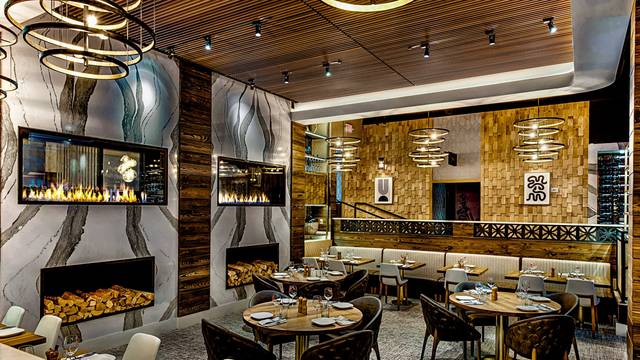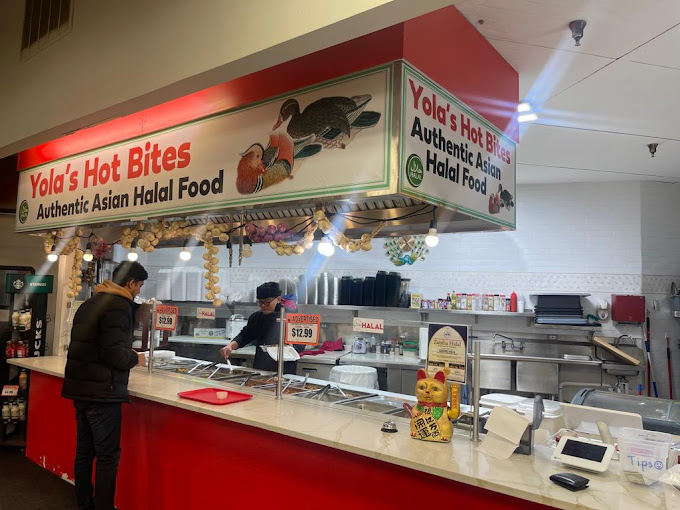Fine Dining Experience Islamabad: Enjoy Glamorous Culinary Joys
Fine Dining Experience Islamabad: Enjoy Glamorous Culinary Joys
Blog Article
Savor Genuine Asian Food With a Pan-Asian Spin for a Culinary Experience
Getting started on a culinary trip via genuine Asian cuisine, enhanced with a Pan-Asian spin, provides a distinct possibility to check out the rich tapestry of flavors that specify the region's diverse culinary customs. As you ponder these luring meals, take into consideration the social narratives and historical influences that shape them, each bite providing a tale waiting to be found. Romantic restaurants Islamabad.

Checking Out Pan-Asian Tastes
In the realm of worldwide gastronomy, Pan-Asian cuisine stands out for its exceptional diversity and the unified interaction of flavors from various Asian societies. This cooking method celebrates the abundant practices and distinct active ingredients discovered throughout the continent, developing a tapestry of preferences that is both fascinating and enjoyable. Secret to Pan-Asian cuisine is its ability to balance different flavors-- sweet, salted, spicy, and sour-- while highlighting the quality and quality of each ingredient.
From the umami-rich soy sauce of Japan to the fiery chili peppers of Thailand, Pan-Asian food provides a considerable scheme of tastes. These elements are frequently integrated in inventive ways, enhancing recipes with layers of complexity. As an example, the use of aromatic natural herbs such as lemongrass and cilantro, common in Vietnamese and Thai cuisine, includes a refreshing brightness to dishes, while the consolidation of coconut milk provides a velvety, rich appearance.
The emphasis on fresh produce and fragrant flavors ensures that each meal is not only a feast for the taste buds but likewise for the senses. Pan-Asian food welcomes restaurants to begin on a culinary trip, checking out the vast and differed landscapes of Oriental gastronomy with every bite.
Blend Recipes to Attempt
While Pan-Asian cuisine is celebrated for its typical flavors, the contemporary cooking landscape is increasingly accepting fusion meals that blend these timeless components with influences from various other regions. This ingenious approach not only honors the abundant heritage of Oriental cookeries however additionally introduces unique preference experiences that appeal to contemporary palates.
A prime instance of such a combination dish is the Korean-Mexican taco, where seasoned bulgogi beef is covered in a warm tortilla, covered with kimchi and a zesty gochujang-infused salsa. This mix marries the bold, mouthwatering flavors of Korea with the lively, fresh elements of Mexican cuisine. In a similar way, sushi burritos have actually gained appeal, amalgamating the delicate virtuosity of Japanese sushi with the hearty, hand-held benefit of a burrito, commonly featuring fusion active ingredients like tempura shrimp and avocado with a drizzle of wasabi mayo.
One more significant dish is Thai curry ramen, which infuses the creamy, aromatic spices of Thai curry into the calming brew of traditional Japanese ramen, developing an unified mix that tantalizes the senses. These blend meals prolong beyond simple uniqueness; they represent a cooking dialogue in between societies, encouraging exploration and innovation in the world of Pan-Asian food.
Necessary Ingredients and Spices
To absolutely appreciate Pan-Asian food, one should recognize the vital ingredients and seasonings that develop its structure. This diverse cooking style draws from a rich tapestry of Asian traditions, utilizing a harmonious blend of flavors and structures. Trick active ingredients include soy sauce, fish sauce, and oyster sauce, which present a mouthwatering umami depth important to Asian recipes. Corresponding to these are rice vinegar and mirin, offering a fragile level of acidity and sweetness.
Aromatic components are essential, with garlic, ginger, and lemongrass being common throughout numerous Pan-Asian dishes. These active ingredients give an aromatic base that improves the complexity of tastes. Seasonings such as star anise, cardamom, and cinnamon introduce heat and character, resembling impacts from regions like China and India.

Food Preparation Strategies and Tips
Mastering the art of Pan-Asian cuisine calls for familiarity with its distinctive food preparation strategies, each contributing to the vibrant tapestry of flavors this culinary tradition is celebrated for. Central to these techniques is the stir-fry, a fast food preparation method that protects the dietary honesty and dazzling colors of components. Utilizing a frying pan, the stir-fry method permits also warm distribution, vital for accomplishing the characteristic texture and taste equilibrium of Pan-Asian recipes.
Another fundamental strategy is steaming, especially prevalent in Chinese cuisine. This mild approach maintains the all-natural tastes and nutrients of ingredients, making it ideal for seafood and vegetables. Dumplings, a precious staple, frequently profit from steaming, causing soft, delicious structures.
Grilling, also important, imparts smoky midsts to meals such as Oriental bulgogi or Japanese yakitori (pan asian restaurant Islamabad). This strategy typically entails seasoning ingredients, allowing flavors to pass through deeply before food preparation over an open flame or warmer
Last but not least, grasping the art of stabilizing flavors-- sweet, sour, salted, bitter, and umami-- is critical. Effectively layering these elements can raise a recipe from common to phenomenal, using a complex and pleasing cooking experience that personifies the essence of Pan-Asian cuisine.
Eating Experiences Worldwide
Across the globe, Pan-Asian cuisine supplies an unparalleled eating experience, celebrated for its abundant tapestry of flavors and vibrant presentations. This cooking phenomenon has gone beyond social boundaries, catching the hearts and tastes buds of food fanatics worldwide. In cosmopolitan cities fresh York, London, and Sydney, Pan-Asian dining establishments act as melting pots where culinary traditions from Thailand, Japan, China, and past merge, supplying restaurants with a diverse mix of dishes that highlight the region's variety.
The you can try here global appeal of Pan-Asian food depends on its capacity to offer both credibility and innovation. Chefs masterfully marry traditional components such as lemongrass, soy sauce, and miso with modern techniques, causing meals that are both refreshingly brand-new and familiar. This fusion read the full info here allows diners to start a culinary journey that values heritage while welcoming modernity.
In addition, eating experiences are raised with thoughtfully made settings that reflect the principles of Pan-Asian aesthetic appeals. From minimal Japanese-inspired insides to vivid Thai-themed areas, each dining establishment supplies an one-of-a-kind atmosphere that complements the cooking offerings. Because of this, clients are not simply consuming a meal yet partaking in a cultural experience, making Pan-Asian eating a really global sensation.
Conclusion
The exploration of Pan-Asian food uses an extensive understanding of the detailed interplay of tastes and cooking practices throughout Asia. By accepting blend recipes such as Thai curry ramen and sushi burritos, the cooking trip not only highlights the versatility of standard components yet additionally showcases cutting-edge contemporary strategies. This gastronomic journey, improved by cooking techniques and necessary spices, offers a special opportunity to value the multiculturalism and cooking artistry that specify Pan-Asian cuisine on an international range.
Embarking on a cooking trip with authentic Oriental cuisine, boosted with a Pan-Asian spin, provides an unique opportunity to explore the rich tapestry of tastes that define the area's varied culinary customs.In the world of worldwide gastronomy, Pan-Asian cuisine stands out for its impressive diversity and the unified interaction of tastes from various Eastern cultures. Secret to Pan-Asian cuisine is its capability to balance different flavors-- wonderful, salted, spicy, and sour-- while highlighting the quality and quality of each active ingredient.

Report this page